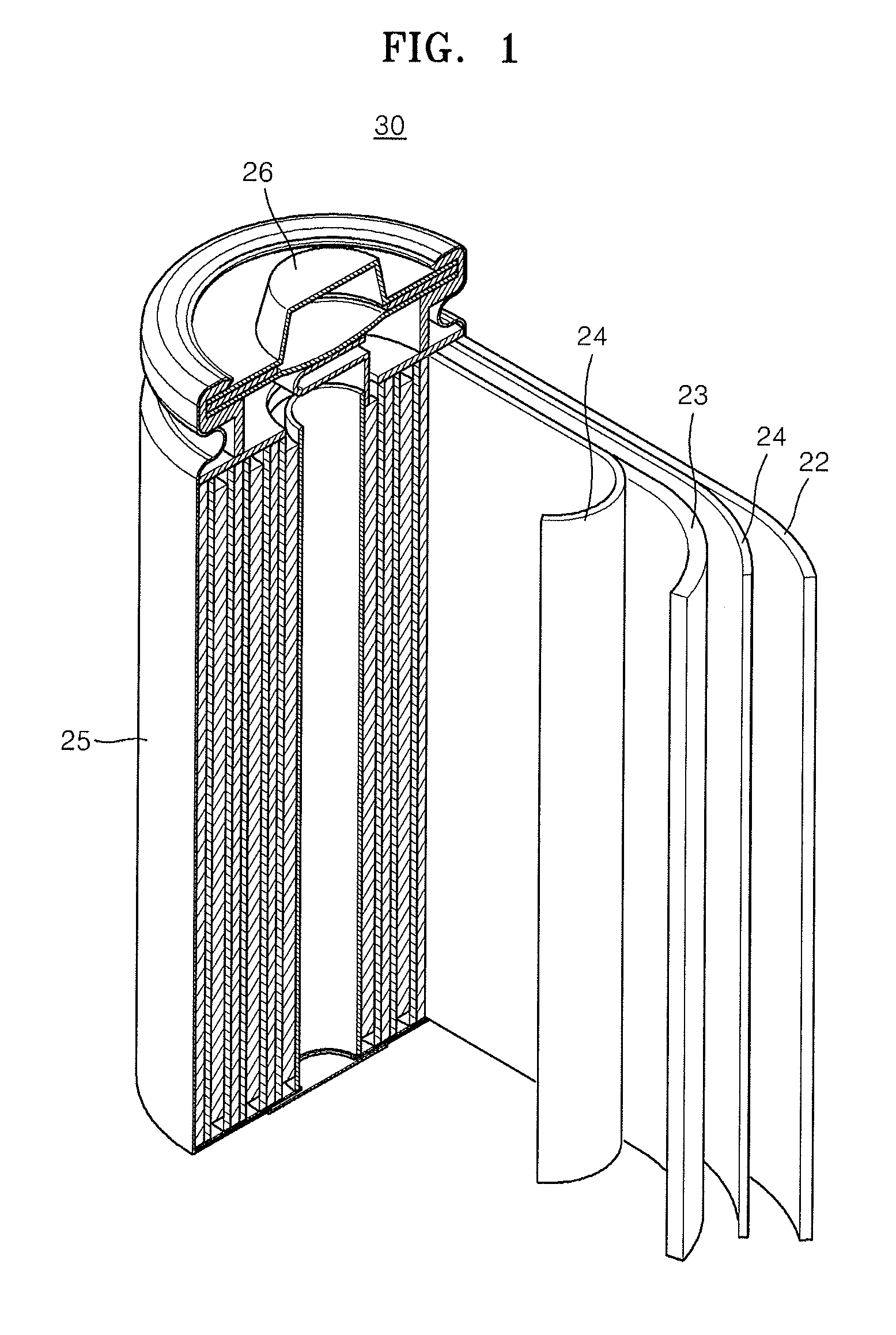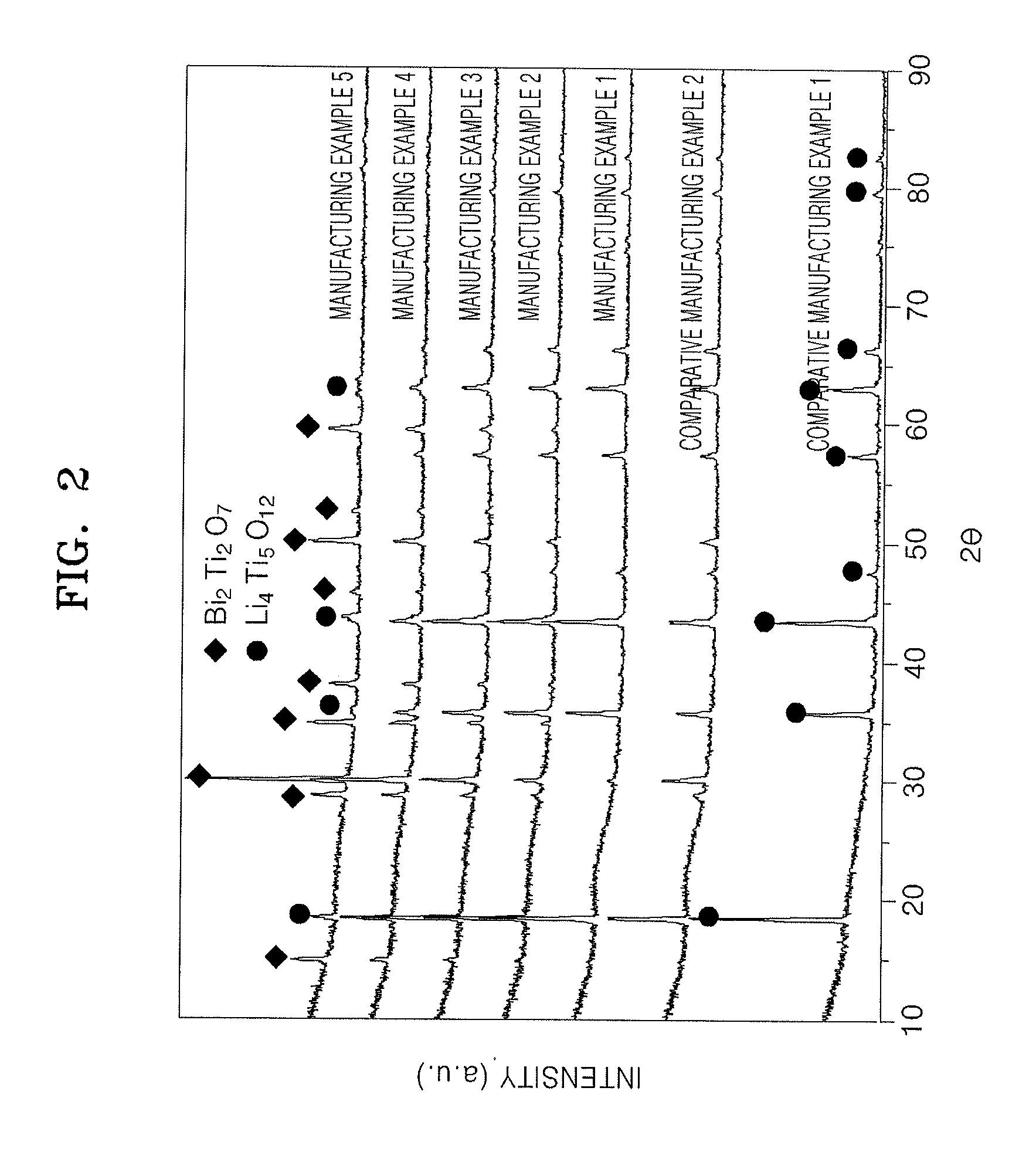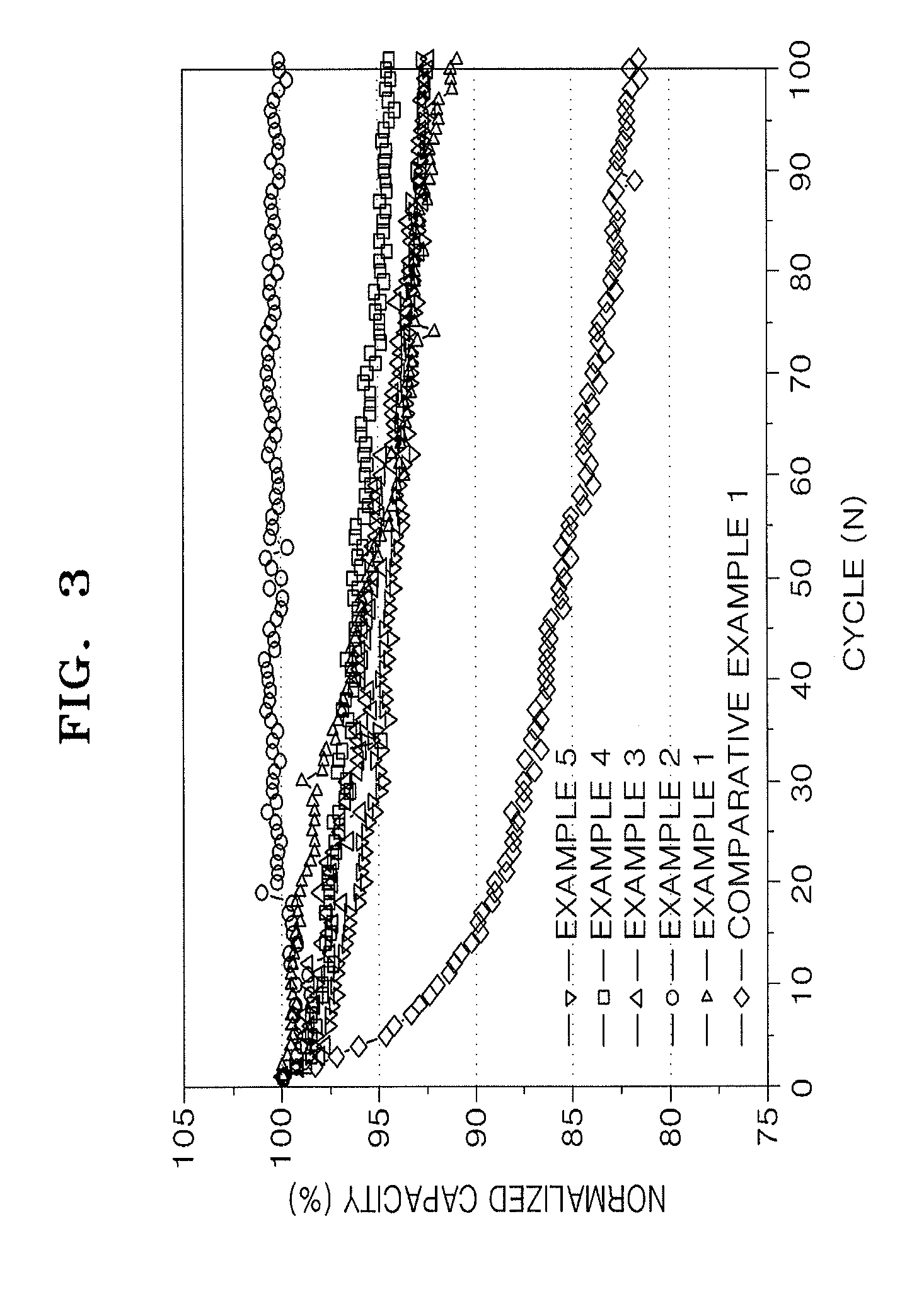Composite, method of manufacturing the composite, anode active material including the composite, anode including the anode active material, and lithium secondary battery including the anode
- Summary
- Abstract
- Description
- Claims
- Application Information
AI Technical Summary
Benefits of technology
Problems solved by technology
Method used
Image
Examples
manufacturing example 1
Manufacturing of a Composite
[0076]About 1.2876 g of Li2CO3, about 1.7321 g of TiO2, and about 0.0423 g of Bi(NO3)3.5H2O were mixed at the same time via mechanical mixing for about 30 minutes by using a ball mill. The resultant mixture was heat treated at about 850° C. in air for about 5 hours to manufacture a Li4Ti5O12 / Bi2Ti2O7 composite having a molar ratio (x(Li4Ti5O12) / y(Bi2Ti2O7)) of about 0.99:0.01 (x:y).
manufacturing example 2
Manufacturing of Composite
[0077]About 1.2876 g of Li2CO3, about 1.7049 g of TiO2, and about 0.2113 g of Bi(NO3)3.5H2O were mixed under the same conditions, as described previously with reference to the Manufacturing Example 1. The resultant composite Li4Ti5O12 / Bi2Ti2O7 had a molar ratio of about 0.95:0.05.
manufacturing example 3
Manufacturing of Composite
[0078]About 1.2876 g of Li2CO3, about 1.6701 g of TiO2, and about 0.4226 g of Bi(NO3)3.5H2O were mixed under the same conditions, as described previously with reference to the Manufacturing Example 1. The resultant composite Li4Ti5O12 / Bi2Ti2O7 had a molar ratio of about 0.91:0.09.
PUM
 Login to view more
Login to view more Abstract
Description
Claims
Application Information
 Login to view more
Login to view more - R&D Engineer
- R&D Manager
- IP Professional
- Industry Leading Data Capabilities
- Powerful AI technology
- Patent DNA Extraction
Browse by: Latest US Patents, China's latest patents, Technical Efficacy Thesaurus, Application Domain, Technology Topic.
© 2024 PatSnap. All rights reserved.Legal|Privacy policy|Modern Slavery Act Transparency Statement|Sitemap



